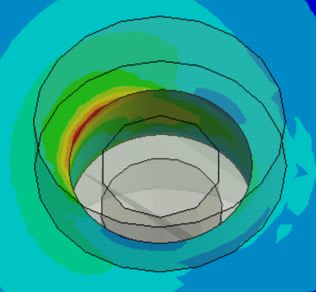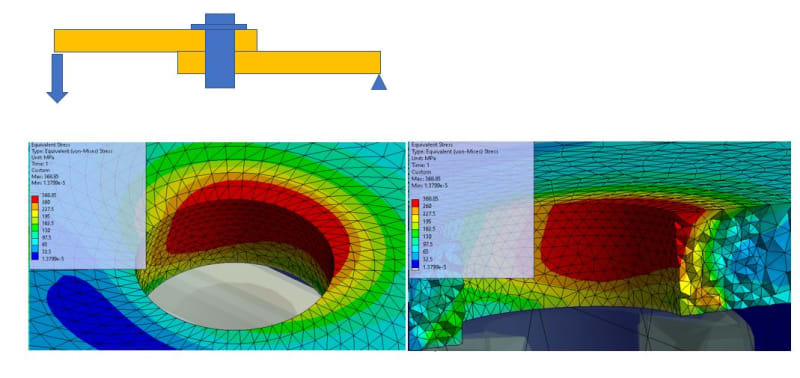Lee.Conti
Automotive
- Nov 8, 2019
- 87

Under static condition, the bolt hole stress shows some stress above yield, localized, the stress near the bolt head is below yield...
Should we use tensile strength instead of yield to do margin of safety check? I see the area underneath bolt head may experience little yield under bolt pretension.
Thank you!

